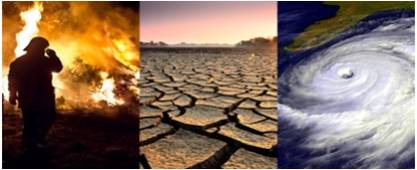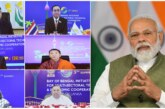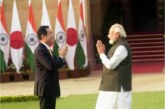“The hash tag #TimeForAction was the buzz word at COP25, Madrid and launched various ambitions to accelerate progress towards the Paris goals. With COP25 being the final summit before the clock ticks over into the deadline year of 2020 Kyoto protocol, countries are announcing more ambitious contributions in 2020”.
Critics argue that ‘No deal was better than a bad deal that would have undermined the Paris Agreement’. Many have their eyes set on the UN Climate Change Conference COP26 in Glasgow in 2020. Swedish campaigner Greta Thunberg, for one, is not impressed: “If you look at it from a certain point of view, we have achieved nothing. The young activist said that she, and the millions who have marched and protested around the world in the last two years.
Some have identified that it did not produce a desired increase of ambition from the world’s major polluters, nor did diplomats reach consensus, critical sticking points to implement the Paris Agreement. U.N. Secretary-General António Guterres said, “I am disappointed with the results of #COP25. The international community lost an important opportunity to show increased ambition on mitigation, adaptation & finance to tackle the climate crisis.”
Support Awaited
One of the key agenda items was Article 6 of the Paris Agreement, involving international carbon trading between nations. Dissent against the fossil fuel industries demonstrated the need for cutting down emission and strengthen attempts towards Renewable sources. However, developed countries are yet to fully address the calls from developing countries for enhanced support in finance, technology and capacity building, without which they cannot green their economies and build adequate resilience to climate change. In short, Madrid climate talks failed spectacularly.
The previous COP in Poland failed to reach consensus on these trading rules, and after this latest meeting, many contentious issues remained unresolved. The UN Environment Programme’s (UNEP) own emissions gap report, released just prior to the COP, showed the stretch 1.5C goal of the Paris Agreement is “slipping out of reach”. Even if existing climate pledges of countries’ Nationally Determined Contributions are met, emissions in 2030 will be 38% higher than required to meet that target. There does exist a conundrum of thoughts and views with no formidable plan of actions.
Vociferous Call for Action
As COP 25 opened, many viewed it as an opportunity to be a platform to reduce global emissions, particularly through countries indicating intentions to put forth enhanced climate plans Dr Arvind Kumar, President, India Water Foundation also witnessed vociferous Call for Action, beyond rhetoric substantial boost for climate action across the globe, which is definitely progressive & constructive. In a climate talks that could boast few triumphs to its name, two small wins were the approval of a new Gender Action Plan and a work plan for the Local Communities and Indigenous Peoples Platform.
 On a brighter side, 177 companies pledging to cut emissions in line with the 1.5C target as part of the Climate Ambition Alliance. This came after a group of 477 investors, controlling $34tn in assets, called on world leaders to update their NDCs and step up ambition. While the Paris Agreement mandates countries put forth revised plans every five years, COP 25 did not set a deadline for announcing those actions in 2020. Dr Kumar viewed it as an instrumental visit with unwavering focus on Climate Action, optimistic discussions and deep introspection over climate issues. Conference rightly rang with the triad of ‘Adaptation, Mitigation and Implementation pathways to realize climate neutrality by 2050’.
On a brighter side, 177 companies pledging to cut emissions in line with the 1.5C target as part of the Climate Ambition Alliance. This came after a group of 477 investors, controlling $34tn in assets, called on world leaders to update their NDCs and step up ambition. While the Paris Agreement mandates countries put forth revised plans every five years, COP 25 did not set a deadline for announcing those actions in 2020. Dr Kumar viewed it as an instrumental visit with unwavering focus on Climate Action, optimistic discussions and deep introspection over climate issues. Conference rightly rang with the triad of ‘Adaptation, Mitigation and Implementation pathways to realize climate neutrality by 2050’.
Countries stressed upon the need for fulfilling the pre-2020 commitments by developed countries, and that pre-2020 implementation gaps should not present an additional burden to developing countries in the post-2020 period. Several countries like India Brazil, India, South Korea and China also want to carry over credits earned, also by companies, to meet new climate targets under the Clean Development Mechanism, a trading scheme under Kyoto. The carbon credit system allows countries to reduce their emission reduction targets by accumulating and trading in carbon credits in the international market.
Ambitious India
The agenda of “carryover” carbon credits from the Kyoto Protocol to meet commitments under the Paris Agreement was at the crossroads and hence non-finalized. If these rules are well-implemented, it is argued that Article 6 could unlock higher ambition or reduce costs, while drawing in the private sector and spreading finance, technology and expertise around the world. The island countries like Vanuatu and Tuvalu, the Bahamas tried hard to get an international climate deal and reiterated that ‘what’s needed right now is more countries to step up their own targets for curbing emissions, but also to be more willing to pressure others, with the largest pressure coming from the largest economies’.
India has been ambitious in its actions and has emphasised that developed countries should take the lead in undertaking actions and fulfill their climate finance commitments of mobilising $100 billion per annum by 2020 and progressively scale up their financial support to inform parties for future action through NDCs. As countries of South Asian Least Developed Countries Bhutan, Bangladesh and Nepal are graduating to Developing Country status, India can play a role of ‘Key Facilitator’ among the South Asian countries through expanded transversal.
Can India be the Ice Breaker?
- With key emitters such as the US, Australia and Brazil displaying hostility towards international climateaction, a lot now hangs on countries like India, China and the EU to upscale the Paris Agreement’s momentum.
- It’s significant we finalise the “rulebook” of the Paris Agreement – the operating manual needed when it takes effect in 2020 – by settling on rules for carbon markets and other forms of international cooperation under “Article 6” of the deal.
- India must take a firm stand to strengthen negotiations that focus on emissions curbs based on the principles of Common but Equitable Responsibilities and make countries realign their emissions-cutting targets with scientific advice on staying within 2C (and hopefully 1.5C) of global heating above pre-industrial levels.
- India can take a lead to aid the creation of robust rules for the global trading of carbon credits, increased commitments for finance to help developing nations tackle climate change, and most importantly, implement ambitions to a level consistent with averting catastrophic climate impacts.
- A renewed promise for new global climate finance goal to be made by 2025, which has to be higher than the $100bn per year promised from 2020-2025. India and other developing countries must focus on new implementation framework for carbon markets having extremely strong commitments to the rights and protection of those most affected by such markets, namely vulnerable and Indigenous communities.
- Most importantly, such actions must uphold ‘common man’s perspectives’ and collective efforts towards Climate action must imbibe ‘localization & integration of SDGs’
The India Pavilion at the two-week long UN climate change had special focus on “sustainable lifestyles” as a solution to climate change. Spinning the charkha was a symbolic act that provided an opportunity to step back and reflect on their consumption choices and reminded the ancient wisdom of need-based consumption that motivates us to draw less from nature and replenish more. Shouldn’t we tread on Gandhian principles of perseverance, self-sufficiency and sustainability?
“Let’s turn the stride towards ‘Action-oriented Ambitions’”.
*By Dr. Arvind Kumar, President, India Water Foundation
Article published in SME World Magazine | January 2020



